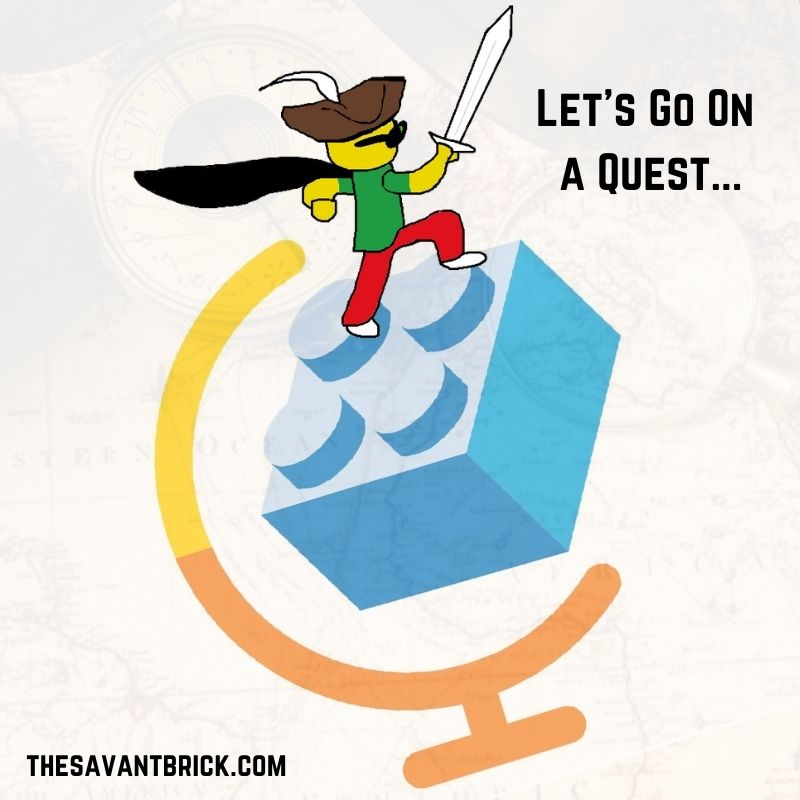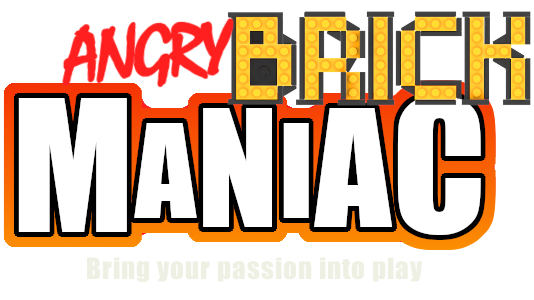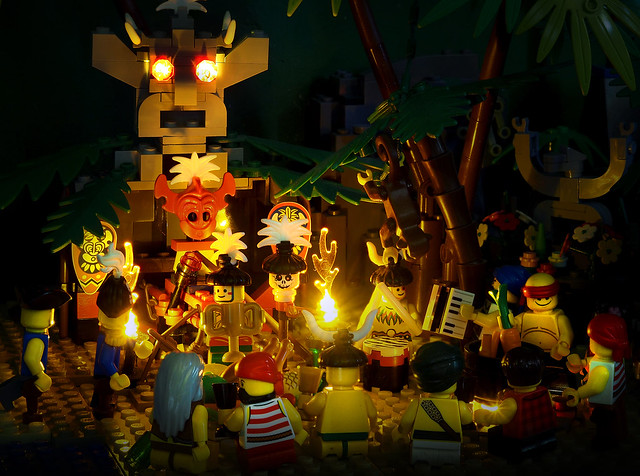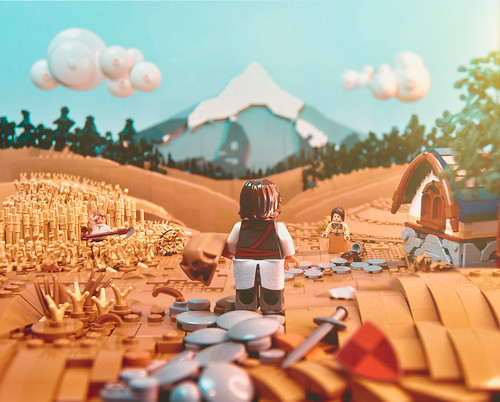So, last time, we talked about creating your first town for your tabletop roleplaying game. In our example case, that town was called Mammoth’s Rest, a small settlement in a prehistoric-fantasy world.
Now, it’s time to talk about what you’ll actually be doing when playing a tabletop RPG most of the time: doing quests. Set aside your LEGO bricks (for just a moment, I promise!), and let’s go over some basics about how you can build a quest.
What is a Quest in World Building?

So, what’s a quest? Well, essentially, a quest is whatever task you give your players – or whatever task they decide to take upon themselves. It can be anything from “Hey, get me five chicken eggs” to “Kill the king and burn his kingdom.” The general rule is that as your players become more powerful, the scope of the quests lean more toward the “kill the king” variety. But that doesn’t mean an all-powerful player can’t go pick up some groceries if they feel like it.
Giving the players a quest can be done in a variety of ways. In most tabletop games, each player has a backstory – essentially a small summary of who they were before the game started and what they were doing. Some quests can easily be tied to that.
For example, let’s go back to our prehistoric world and say that one of our players wrote in their backstory that their father perished while fighting an albino Tyrannosaurus, and now they seek to avenge his death. You can be sure that the moment you mention a Tyrannosaurus in-game, that that particular player’s eyes will light up, and you’ll have yourself a potential quest.
However, at least for the first couple of sessions you play, it’s best not to directly focus on a player’s backstory like this.
What You Should Avoid When Building a First Quest
Usually, the players’ characters don’t know each other at all. So if the player we previously mentioned decides to go slay a Tyrannosaurus, the other players have literally zero motivation to go help. It’s like you’re with some friends, and you meet a new dude for the first time, and he proceeds to ask you to go on a heist with them. You’re probably not going to do that.
So for now, instead of creating quests out of your players’ backstories, it’s best to go back to the NPCs (non-player characters) you made for your first starting town. Remember those? From the previous blog? Good, good.
Related:
Check out our Top 9 Tabletop Starters for Newbies!
What you need to do for those NPCs is to think about what they want. This will help you come up with a quest that makes thematic sense for them. For example, if your blacksmith NPC tells the players that they want some rare ore found near the town, that’s pretty believable. On the other hand, if the blacksmith character tells your players that they want a rare type of silk, that’s pretty weird – it can work, but it needs a ton more setup.
So if you’re interested in finding your style as a GM/DM (game master/dungeon master), you may benefit from avoiding fancy fluff early on.
How to Build a Quest Using NPCs
So once again let’s keep it simple, my intrepid readers. Let’s focus on our NPC Groth, the leader of Mammoth’s Rest.
Since Groth is the town’s leader, we can safely presume that he wants to protect Mammoth’s Rest. With that in mind, let’s try and think of three things that might be threatening the town:
Set the Stage by Imagining Conflicts
– A feral mammoth is rampaging near Mammoth’s Rest.
– A group of dinosaurs is attacking the town’s cattle.
– Mysterious bandits are raiding near the road leading to town, attacking caravans.
These can all be quests that you can give to your players through the character of Groth. You can even give them the choice between the three scenarios, or just straight up give them all three, period.
There has to be a reward for the quests too, obviously – usually money, but feel free to improvise.
Now I hear some of you picky impatient readers saying “but how does this help with worldbuilding?” Well now, let me tell you!
Why Quests Add Value to Your World Building
Use Relevant Characters
First of all, by simply thinking of quests that fit a character, you’re thinking about the character. About who they are and what they want. Sure, this can be pretty basic – it doesn’t take a genius to think that the town leader wants to protect the town. Even so, it’s a good exercise. And later on, when you have experience, you can try for more difficult and nebulous connections.
Remember the blacksmith asking about silk? If you do manage to make that connection convincing and relevant, you’ve made the blacksmith into an interesting character along the way.
Weave a Story
The second way that quests help worldbuilding is by expanding upon them. Let’s take, for example, the quest about the dinosaurs attacking the town’s cattle. At first glance, this is pretty straightforward. And you can keep it that way too, if you like!
But what if there was a deeper reason behind the dinosaur attack? What if someone is causing the dinosaurs to attack cattle, making them hostile, seeking to take total control of them? Well, now you’ve got yourself a story. And at the same time, this expands our world building.
Add Lore
Let’s say the person behind this plot is some sort of shaman figure. We need to figure out some stuff about them – are there more like him? Are they a part of some order, or is an order already trying to stop them? What made them want to take control of dinosaurs?
By the end of this line of thinking, you might have a shaman order active in your world, which can be friends or enemies of your players. Similarly, if you take the bandit raids we mentioned above, you can create a thieves’ guild to roam around your world.
These organizations are essentially links. When the players eventually move to another town or city in your adventure, you can present them again, so the players feel like they have some semblance of control, or of knowing what’s going on and who’s who.
A World Isn’t Built in a Day
Can’t say it enough: it’s important to once again keep it simple, and build off of that simplicity incrementally. Some quests are exactly what they seem, nothing more. If every quest you give your players has a deep story behind it, by the fifth time you’re playing you’ll need a PowerPoint presentation to keep all the things straight. Consider yourself warned.
Now that we saw how to use quests to build out your world, I’ll leave you with a piece of relevant information: DnD Speak. This is a page full of shortcuts for creating your own world. Basically, it’s got a bunch of generators – for things like taverns and NPCs, for example – as well as some cool lists of 100 things… One hundred traveling merchants, 100 activities to do at a fair, and more. This is always useful to have on hand when you want to throw random stuff at your players.
Now as you were! And while you’re at it, go grab some LEGO bricks and minifigures and start visualizing your world. That wasn’t so bad, right?


